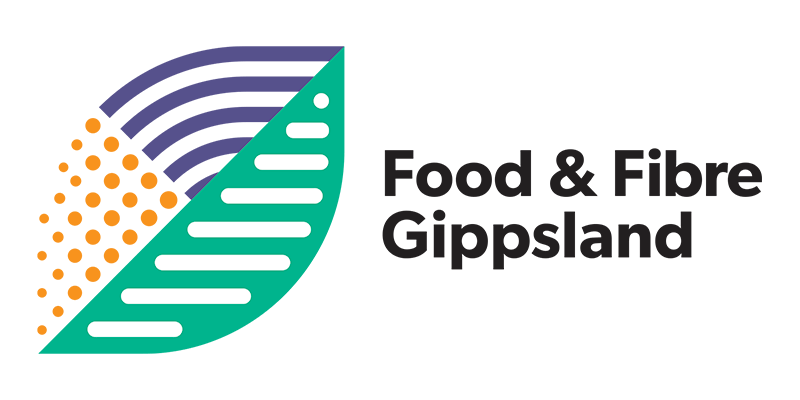Victoria Drought Resilience Adoption and Innovation Hub - Gippsland update
National Resource Management soil moisture monitoring field day at Boisdale, May 2022
VegNET Gippsland has recently wrapped up the first year of a demonstration trial of soil moisture monitoring, hosted by Tripod Farmers at their Boisdale farm. New soil moisture monitoring technology was trialled over the 2021-22 peak summer growing season in Gippsland to encourage adoption of agtech and demonstrate environmental stewardship in the region. The demonstration was funded by the Future Drought Fund as part of the Natural Resource Management (NRM) Drought Resilience Program. The project involved a collaboration with the local Sustainable Irrigation Program, delivered by Agriculture Victoria and the West Gippsland Catchment Management Authority, as well as involvement and guidance from AUSVEG and Elders agronomists.
On 6 May 2022, about 20 growers and industry stakeholders gathered in Boisdale to see and hear more about the trial and technology. VegNET Regional Development Officer (RDO) Bonnie Dawson and host grower Walter Chadwick gave a “warts and all” reflection on the project. Due in part to the La Nina summer, the soil moisture monitoring technology had experienced issues calibrating and providing accurate data to the grower. This therefore limited the confidence of the grower, and the project reference group, to respond to the technology.
The project successfully increased the knowledge of the host grower about soil moisture monitoring; and although the technology wasn’t fully adopted by the end of the first growing season, they were glad to have had the opportunity to trial the technology.
As Walter reflected: “Like with everything in farming, I learnt more from when things went wrong.”
A key learning has been that adoption of soil moisture monitoring isn’t a simple linear process and may take longer than a year to confidently integrate into an intensive vegetable production system. Positively, Walter has agreed to take part in an expansion of the initiative and will continue to trial the technology over the coming summer.
The project demonstrated that adoption of this technology is not about completely replacing current methods of irrigation scheduling, such as physically checking the paddock, but the data made available can add to a grower’s understanding of the interaction between plant, water and soil.
At the May field day, a presentation from Marek Matuszek of AgLogic highlighted that when used optimally, soil moisture monitoring can add more to your system than simply increasing water-use efficiency and automating irrigation. Three reasons to use soil moisture monitoring before irrigation scheduling were:
To develop the growers’ understanding of the relationship between plants, soil and water. At different depths, data can illustrate where water is being utilised, providing an indication of root depth and soil architecture, and soil limitations/variability across a paddock
To identify the cause of disease and pests – the data can contribute to the growers’ understanding of risks and the effectiveness of potential mitigation strategies
To validate the growers’ system capacity – is it behaving as expected?
The project developed two factsheets to support intensive vegetable growers to select appropriate technology when first considering adopting this agtech –
These factsheets have been designed to complement the poster previously developed by the VegNET Victoria project (available here on the AUSVEG Vic website).
Overall, one of the greatest benefits of the project has been having various stakeholders around the table, bringing together perspectives from local irrigation specialists, regional natural resource management and industry advisors. The opportunity to work cooperatively on this project increased the shared knowledge and skills of Agriculture Victoria, WGCMA and VegNET (both Gippsland and Victoria projects) of how to implement soil moisture monitoring technology into intensive vegetable settings and the benefits of doing so, building each agency’s capacity and preparedness for further extension of this technology in the industry.
“…we have learnt some valuable lessons on what to look for when planning a SMM system for the vegetable industry…” (Sustainable Irrigation project team member)
Through regular update meetings and problem-solving discussions, the program review group (PRG) co-developed knowledge which was also fed through to the technology developer. The benefit of this engagement with the technology company is evidenced in the ongoing changes they have made to the telemetry, which has become more relevant to the intensive vegetable industry over the period of the project.
As a result of the project, the Victoria Drought Resilience Adoption and Innovation Hub (Vic Hub) has confirmed funding for five additional trial sites, which will be situated in different catchments across the region and supported by VegNET Gippsland over the coming year. Gippsland growers who are interested in participating in the project are invited to contact Bonnie Dawson, ph. 0407 683 938 or email bonnie.dawson@foodandfibregippsland.com.au.
Read more about the Vic Hub - Gippsland node here.

